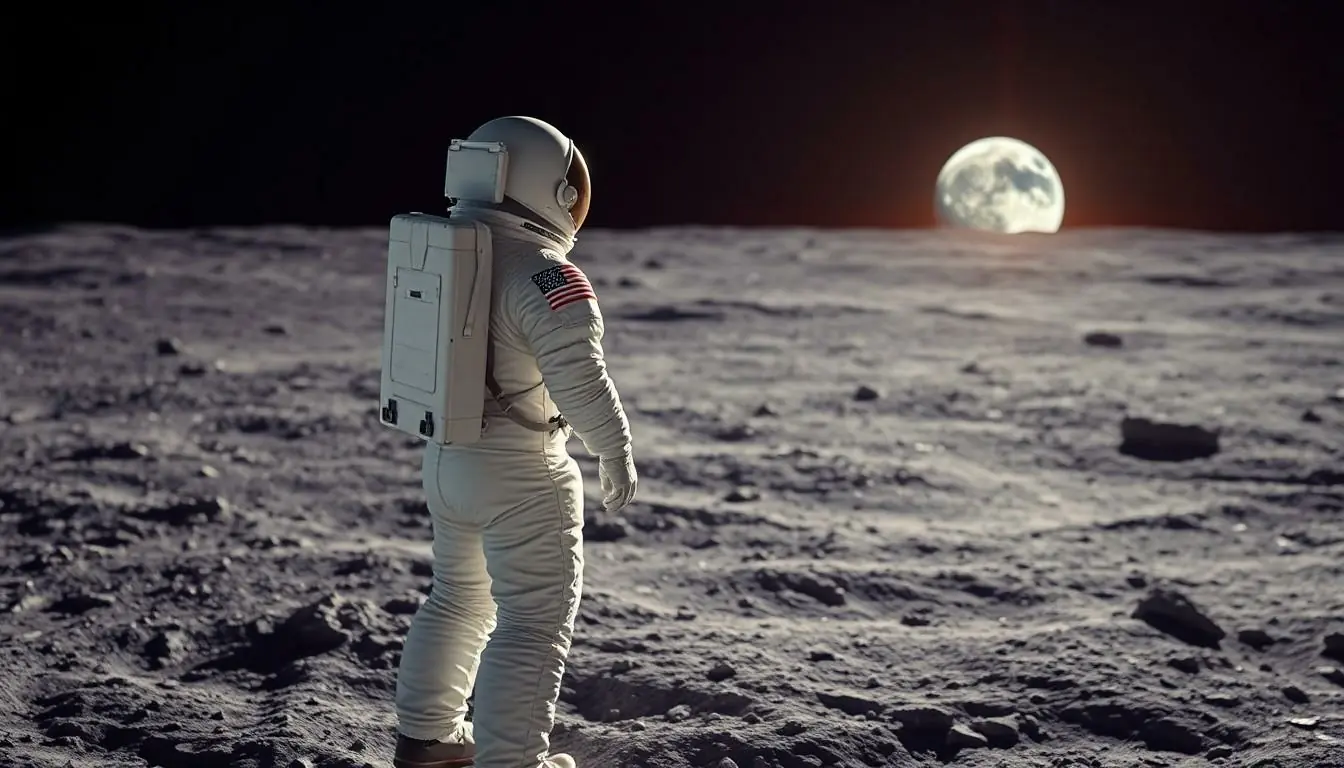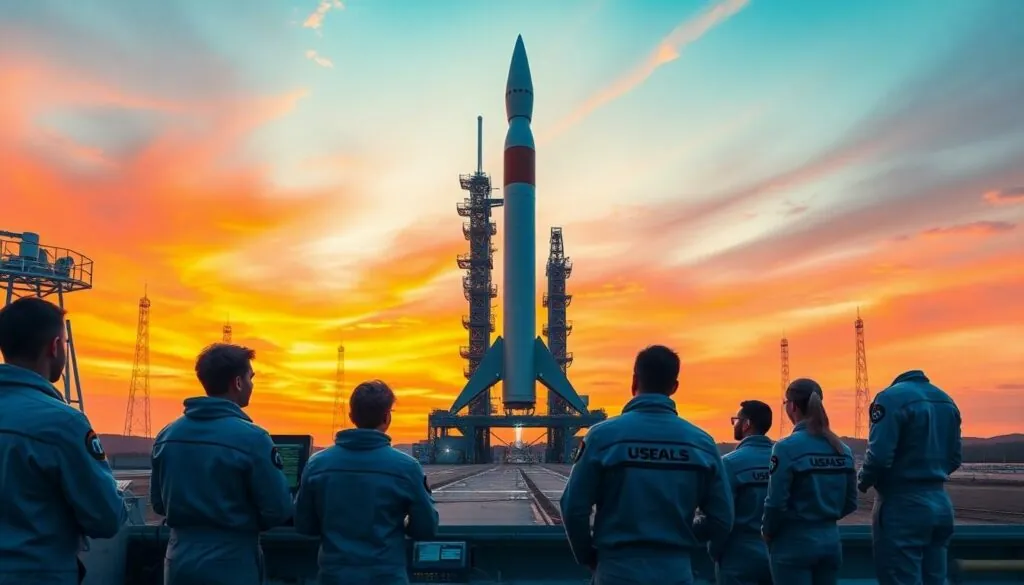Table of Contents
ToggleIn a universe filled with stars and infinite possibilities, space and technology are the dynamic duo of our time. Imagine zooming through the cosmos in a rocket powered by the latest tech, all while sipping your favorite coffee. Sounds like a sci-fi dream, right? But it’s becoming a reality faster than you can say “Houston, we have a problem!”
Overview Of Space And Technology
Space exploration relies heavily on technology, driving innovations that improve human understanding of the universe. Advances in propulsion systems propel spacecraft further into space. Many companies develop reusable rockets, reducing costs and increasing the frequency of launches.
Satellites play a critical role in both space technology and terrestrial applications. They provide essential data for weather forecasting, communication, and navigation. These high-tech devices orbit Earth, collecting valuable information that researchers utilize for scientific studies and practical applications.
Robotics continues to transform space missions. Rovers equipped with advanced sensors explore planetary surfaces, providing data on geology and potential habitats for life. Automation in spacecraft systems enhances mission efficiency and safety during long-duration expeditions.
Artificial intelligence also impacts space technology significantly. AI algorithms assist in data analysis, enabling faster processing of large datasets collected from space missions. Machine learning enhances decision-making processes in autonomous spacecraft, allowing for real-time adjustments during missions.
The excitement of commercial space travel is growing. Companies offer private citizens opportunities to venture beyond Earth, pushing the boundaries of who can experience space. Emerging technologies, including sophisticated life support systems, ensure passenger safety and comfort during these journeys.
These developments highlight the crucial link between space and technology. Together, they inspire future generations to pursue careers in science, engineering, and mathematics, fostering a culture of innovation. Collaboration across disciplines leads to new solutions, enhancing both life on Earth and the human experience in space.
Historical Developments

Historical developments in space and technology highlight humanity’s journey into the cosmos. Various milestones mark significant achievements that reshape our understanding and capabilities.
Key Milestones in Space Exploration
Significant milestones include the launch of Sputnik 1 in 1957, the first artificial satellite. The Apollo 11 mission in 1969 marked the first human landing on the Moon, a defining moment for space exploration. In 1990, the launch of the Hubble Space Telescope transformed astronomical research, providing breathtaking images and crucial data. More recently, SpaceX’s Falcon 9 rocket achieved reusability in 2015, setting a precedent for cost-effective space travel. These milestones illustrate humanity’s evolving relationship with technology and the universe.
Technological Innovations
Technological innovations have propelled advancements in space travel. Improved propulsion systems, such as ion thrusters, optimize fuel efficiency for long-duration missions. Reusable rockets reduce the financial burden of launching payloads into orbit. The introduction of miniaturized satellites enables easier deployment and enhanced Earth observation capabilities. Robotics advancements, including autonomous rovers, facilitate the exploration of planets and moons. Artificial intelligence now assists in analyzing complex data, leading to informed decision-making for missions. These innovations represent a critical intersection of technology and space exploration.
Current Trends in Space And Technology
Current advancements in space and technology shape the future of exploration and Earth-bound applications. Innovations in satellite technology and space robotics lead the charge in this sector.
Satellite Technology
Satellites play a critical role in various applications, including communication, weather forecasting, and global positioning systems. Thousands of satellites orbit Earth, providing real-time data essential for disaster management and climate monitoring. Notably, miniaturized satellites enhance remote sensing capabilities, allowing agencies to collect more detailed images of the Earth’s surface. Governments and private companies alike invest in advanced satellite technology to improve global connectivity and data access. As satellite constellations expand, new opportunities arise for high-speed internet service in remote areas, bridging the digital divide.
Space Robotics
Space robotics transform how missions are conducted beyond Earth’s atmosphere. Rovers explore the surfaces of planets, sending valuable information back to Earth and expanding our understanding of the solar system. Advances in robotic autonomy allow these systems to operate with minimal human intervention, improving mission efficiency and safety. Tools like robotic arms enable maintenance and repair tasks on spacecraft, further extending their operational life. Innovative designs, such as soft robotics, allow for more adaptable and resilient systems capable of handling challenging environments. Companies and agencies are continually developing new robotic technologies to support future exploration missions, paving the way for expanded human presence beyond Earth.
Future Prospects
The future of space and technology promises exciting developments that reshape humanity’s relationship with the cosmos.
Commercial Space Ventures
Commercial space ventures are shaping new opportunities for exploration. Companies like SpaceX and Blue Origin lead efforts in creating accessible rides to orbit for private citizens. Increasing investments in this sector enhance resources for developing spacecraft and infrastructure. For instance, SpaceX’s Crew Dragon spacecraft already transports astronauts to the International Space Station, showcasing the potential for more commercial missions. Emerging players continue to innovate, making space tourism a reality. Aspiring entrepreneurs and established companies are racing to establish a presence in low-Earth orbit. As costs decrease and technology advances, space travel may soon become a common aspect of our lives.
Advancements in Space Travel
Advancements in space travel drive significant changes in exploration. Reusable rockets lead the charge in reducing launch costs. Falcon 9’s successful reusability exemplifies this transformative approach. Innovative propulsion systems further enhance travel efficiency, cutting travel time and maximizing payload capacity. Furthermore, developments in advanced materials make spacecraft lighter and more durable. Autonomy in navigation systems increases mission success rates, ensuring safety during long-duration flights. Artificial intelligence now supports decision-making processes in real time. These advancements collectively ensure that future space travelers experience more seamless and efficient journeys through the cosmos.
The dynamic relationship between space and technology continues to evolve, shaping the future of exploration. As advancements in propulsion systems and robotics enhance mission capabilities, the dream of space travel becomes increasingly tangible for everyone.
Innovations in satellite technology and artificial intelligence are not just revolutionizing space missions but also improving lives on Earth. With commercial ventures leading the charge, the landscape of space exploration is set to expand, opening doors for private citizens to experience the wonders of the cosmos.
This ongoing journey into space not only fuels humanity’s curiosity but also inspires the next generation of innovators ready to push boundaries and redefine what’s possible.





